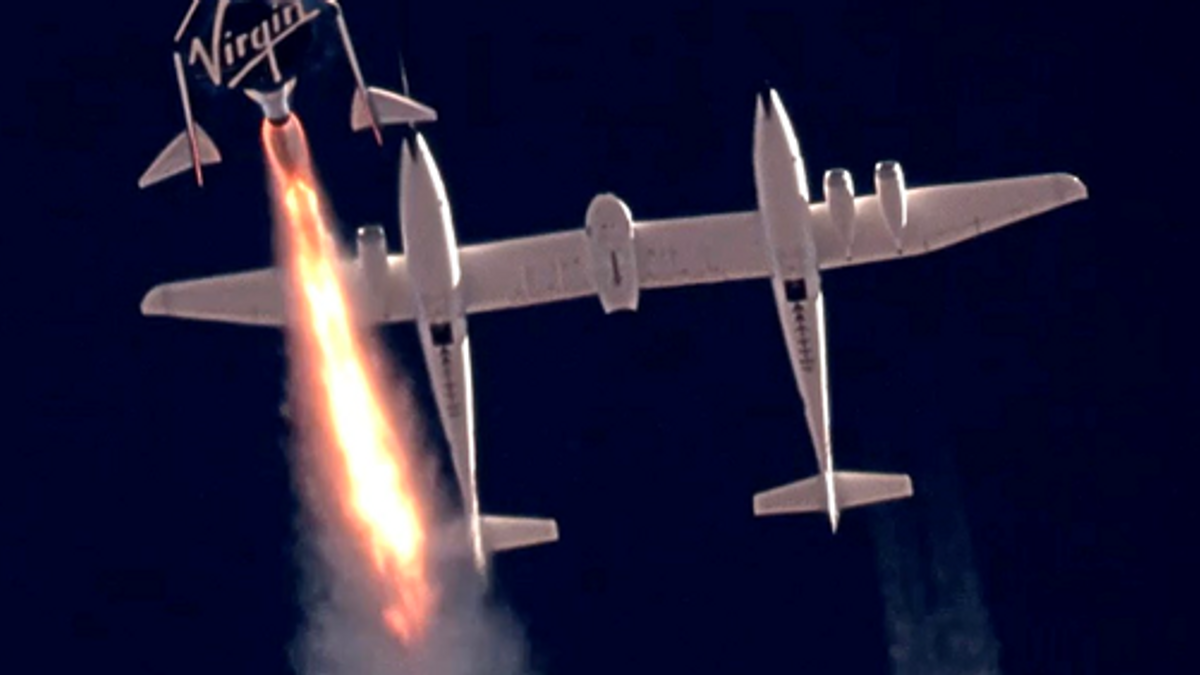
Space Tourism: First Commercial Flight of ‘Virgin Galactic’
Players in Space Tourism
The great race to grab the rich tourists of the world in the name of “Space Tourism” is on. Two billionaires namely Richard Branson having founded his company ‘Virgin Galactic’ andJeff Bezos owning ‘Blue Origin’ are ready with their respective spacecrafts businesses to offer commercial space tours. It is going to be a tough competition with Elon Musk owning ‘SpaceX’ already in business and Boeing entering the fray soon.
The great competition started in 2021. ‘Blue Origin’ had planned his first commercial flight on 21 July 21. However, ‘Virgin Galactic’ hurriedly announced their maiden 'trial flight' for 11 July 21 to 'earn a first' tag in the history books and kept their word too. ‘Virgin Galactic’ has the spacecraft named ‘Virgin Space Ship’ (VSS) Unity mounted within the dual wings of their huge aircraft Virgin Mother Ship (VMS) ‘Eva’. VSS Unity is propelled by a rocket after its release from VMS Eva at around 45-50 KFt AMSL. On the other hand, Blue Origin Spacecraft is fully rocket-propelled in 2-stages. The former is designed to go up to or below Von Karman’s line of 100 Km whereas the latter can go up to 150 Km or so above the Earth. These two offer adventure trips lasting varying duration but actual microgravity/space exposure being only a few minutes (read 'Race for Space Tourism', https://thecounterviews.com/articles/race-for-space-tourism/).
The Objectives of Space Tourism
Space Adventure customers have some minimum requirements that any passenger willing to spend fortunes will be expecting to get in return…
- Near guaranteed safe return from the challenging flight.
- The experience of Microgravity…unhindered Free Floating …without any obstacle.
- sufficient exposure duration for life-time experience and experiment, if any.
- See and observe the unique sights of Sunrise and/or Sunset.
- See and observe the curvature of the Earth with its bluish Atmospheric blanket cover.
- Preferably, make a complete circle of planet Earth, view its changing perspectives under the fast changing day and the night, cosmic events and eclipses…
- Meet situational demands or carry out scientific experiments.
- Celebrate extravagance of B’Days, Proposal to girlfriend, Ceremony of marriage, Honeymoons and so on that the imaginations can take one.
On 11 July 21 M/S ‘Virgin Galactic’ tried to demonstrate to the world that they offered a great prospect to adventure tourism to space in their first trial sortie. The casually dressed Richard Branson and another three of his employees in normal aircrew overalls were observed travelling as mission specialists in the passengers’ compartment. Their rocket-propelled spacecraft VSS Unity was released from under the wings of aircraft 'VMS Eva' at 46393 ft AMSL at a forward speed of 389 mph, with a slight nose-up attitude to facilitate smooth separation at the designated location.
The First Sub-Orbital Flight
Within a second of separation, the VSS Unity rocket ignited to propel the Spacecraft. The max speed touched 3.1 Mach at 125 Kft after 57 sec of the separation time and then went in nose-up attitude. The rocket extinguished past 60 secs with the craft gaining altitude as the speed washed out. At 1’10” of separation time, the passengers were asked to unstrap themselves for experiencing microgravity in the coming seconds. Back flipping of the craft was carried out at 1’33” at about 213 Kft AMSL with a speed of 2.3 Mach to enable the passengers to view the Earth through small windows provided at the ceiling. The flipping also meant that some amount of aerodynamic control must have been there. The max altitude achieved of an imaginary parabola was 2,82652 ft AMSL at 2’42” from separation when speed washed out to 1.1 Mach. Hereafter, the microgravity parabola of the craft started till the so-called 're-entry' to the atmosphere at 3’40” post-separation at 200 KFt altitude when all passengers were asked to return back to their seats and strap-up. Thus an 'over 2 min' of microgravity was experienced. The erect seats seemed to be impediments to free-floating.
FAA Ban on Virgin Galactic
After their first trial flight, ‘Virgin Galactic’ was grounded by FAA for veering-off course due to an insufficiently vertical attitude that could have forced the craft to make an emergency/force-landing elsewhere away from the designated airstrip. This was possibly the reason why the craft had 1.1 M speed at the ceiling altitude before entering freefall. After this defect was resolved, then only FAA issued clearance for the first commercial flight.
The Latest Flight on 29 Jun 2023
In their first operational commercial flight on 29 Jun 23, the above parameters remained largely the same except that Spacecraft ‘Unity’ was released at 44500 ft AMSL, the max speed achieved by the rocket was 2.88 M, max +3G but the craft continued ascending till 2,79,200 ft AMSL (85.1 km) and the speed washed out to 114 mph before the craft nosedived towards earth, gaining max speed of 2.54 M at approx. 135550 ft (41.3 Km) AMSL of re-entry to an increasingly denser atmosphere with max acceleration of +3.6 G.
The 4 passenger seats at each window and the limited ceiling height of the cabin didn’t allow much of free-float under microgravity for which the tourists had paid $200,000 each. They had carried some equipment onboard, meant for experiments. There seemed to be very little time to initiate that experiment. Return to the originating airbase and landing remained uneventful. The firm has now increased its future price tag to $450,000 per person.
Microgravity and Other Concerns
It must have been their life-time experience endeavouring to the near space conditions. The first human sub-orbital flight too is praiseworthy and has surely opened up new avenues in Space-Tourism'. However, the look on the faces of the four passengers having experienced the adventure, was not very great. There seemed to be obstructions and hurdles in their free-floating due to the erect seats as well as the lower ceiling height of the craft. The onset of weightlessness seemed little inspiring as two passengers remained seated and strapped.
There could be some safety concerns as well. Travelling above an atmospheric envelope in normal overalls, without pressure garments and Life Support is dangerous. High-speed meteoroids pose danger at these altitudes and any impact can damage the craft with ensuing atmospheric loss that could be fatal to all passengers and even to the crew without full-pressure clothing. An unexpected failure of the cabin pressure relief valve could be catastrophic. Hence, everyone must have a full/partial pressure garment for unexpected emergencies, that can sustain life for the crucial few minutes while rapid descent could be commenced. The second issue is a very intense sunlight above the atmosphere coming through windows. The window shield is expected to be very efficient in filtering UVs and other radiations.
Final Thoughts
Any Adventure tourism invariably has risks but certainly not at the cost of anyone’s life. All Space Tourists will have some minimum expectations to fulfilling as mentioned above, esp when they pay fortunes. In Virgin Galactic the microgravity is of limited period, space in the cabin isn’t enough to float freely. The firm isn’t trying to give you glimpses of sunrise or sunset. It isn’t even crossing the Von Karman line beyond which the real Space is said to be starting. Clearly Virgin Galactic doesn’t fulfil all those obligations. Besides, there are some safety issues too that need to be addressed. This article only aims at bringing out a third-party viewpoint.






